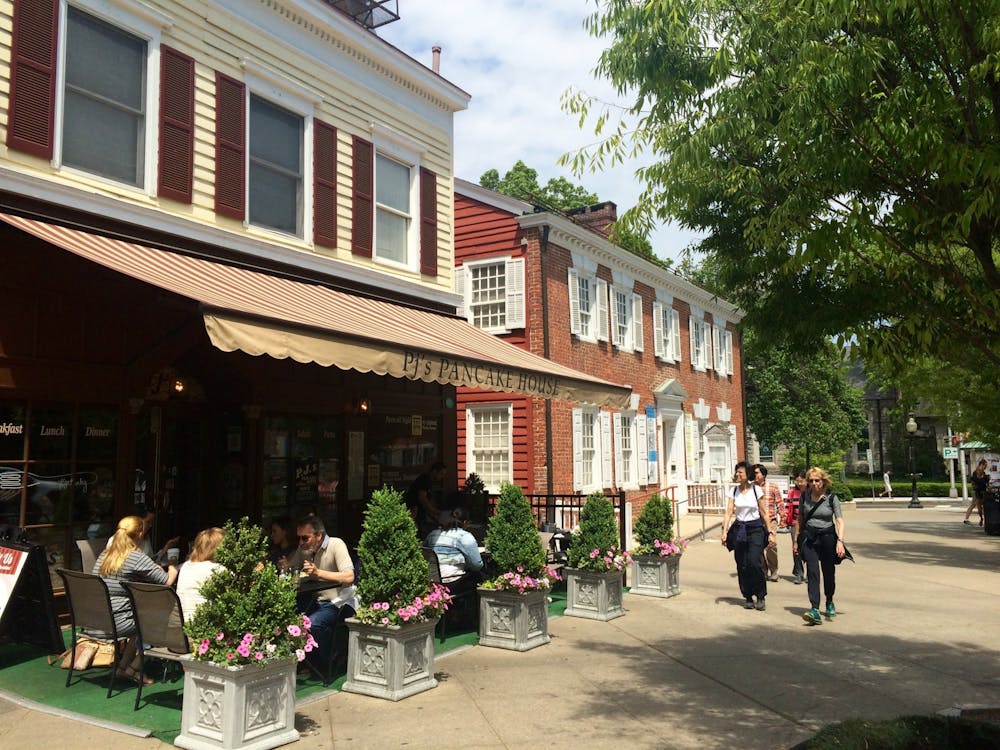This past weekend, FUSE Dance Collective, a relatively new student-run dance collective, finished their spring show, “7 Happenings.” Street sat down with some of FUSE’s dancers to discuss the collective’s first year.
FUSE was first conceptualized by Tess Bernhard ’14, Sam Gebb ’14 and Casey Brown ’14 in the spring of their sophomore year. They had been entertaining the idea of starting their own dance group since freshman year, when they noticed that there were no student-run experimental dance groups. Bernhard also added that the girls wanted an opportunity to work with one another and experience each other’s styles.
“Casey, Sam and I have very different methods of experimentation. I like to push what’s the gray area between dance and theater, whereas Casey is more musically driven. Sam is an architecture student and is very into things and materials,” Bernhard said.
Since its inception, FUSE has avoided strict definitions and accepted all styles of choreography and choreographic processes. Brown and Bernhard talked about the collective as if it were a physical space, a laboratory for dance.
“It was founded to be a haven for a lot of different platforms of dance, whether that’s dance in class or in an experimental, site-specific works,” Brown said, adding that “collaborations with musicians and visual artists are also a big part of our process.”
At first glance, FUSE might seem stylistically redundant considering how many of its dancers and choreographers are also in the dance certificate program, which tends to favor modern and contemporary choreography. But the collective provides students an opportunity to explore any kind of movement they desire. This total stylistic freedom is something that attracted Jennifer Chew ’15.
“The certificate program does provide students with an opportunity to choreograph and learn different styles and trends, but FUSE is nice because it allows students to explore these styles on their own,” Chew said. “The dance department exposes you to a lot of professional dancers, which is great, but they’re the ones setting the choreography.”
FUSE complements the dance department by providing these dancers with a friendly environment to workshop their concepts and ideas. The choreographers meet a couple times each semester to watch each other’s pieces and give constructive criticism. However, Brown added that the function of these workshops isn’t to rank pieces, but to harness the creative eyes of the other dancers and choreographers.
“Our role is to support one another, not edit each other’s work,” Brown said.
Over the summer, Bernhard, Gebb and Brown discussed their ambitions for the collective. Brown quoted one of Bernhard’s replies in the email chain, in which she articulated the importance of expanding their own movement vocabularies and exploring how to communicate using these different vocabularies.
“Language can create different ideas or physical ramifications,” Bernhard said. “[The collective should] create a language around a space that’s more open, more communal.”
Chew echoed this idea when she mentioned the value of sharing ideas. FUSE might seem almost too cerebral in its process, but this impression stems from the dancers’ academic connections to dance. In reality, the collective is fairly informal in its interactions with each another.

“FUSE is a place to hold conversation through dance. I guess that’s the best way to describe the collective,” said Chew, laughing a little. “But the beauty is in its lack of formality.”
Because the collective is student-driven, its future iterations will depend largely on who participates. Brown commented on the self-selective nature of the group, and how it doesn’t fit with the audition-based model for a student dance organization.
“I think the multi-faceted nature of the collective lets people self-select what they want to do and dictate how engaged they want to be,” she said. With this in mind, holding auditions for membership would directly contradict everything that FUSE is trying to do. Its dancers and choreographers choose to participate and don’t bar others from doing so.
“The dance world outside of Princeton, especially the world that FUSE would most readily connect with, isn’t audition-based either,” Brown said, clarifying her point by adding that “there are people who dance professionally, but only dance with people that they know.”
The organic nature of FUSE’s membership is a bit puzzling, considering how much the auditions process dictates participation in the arts on campus. Some might question whether this model will be sustainable, but Chew isn’t terribly worried.
“We’ll just continue to offer this space to people,” Chew said, “And just let them know: ‘This opportunity exists! Just let us know if you want to take it.’”







